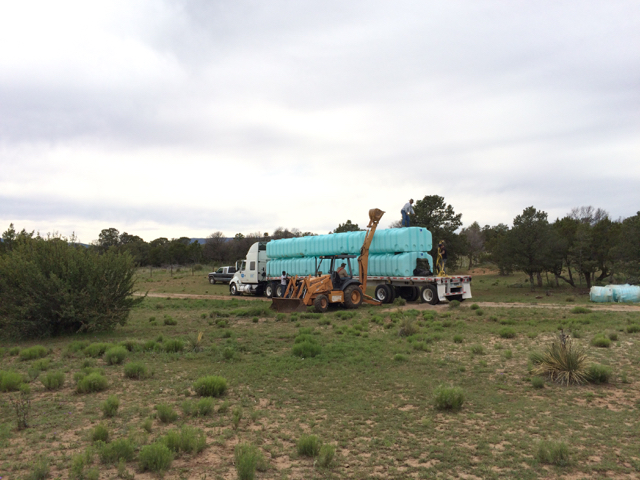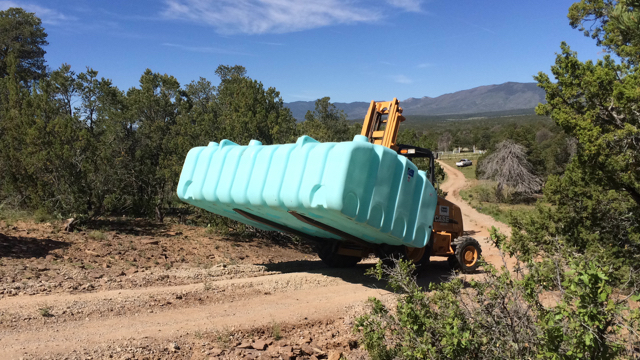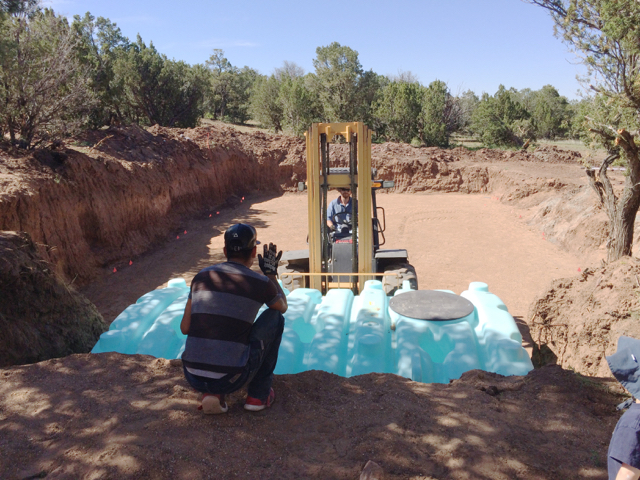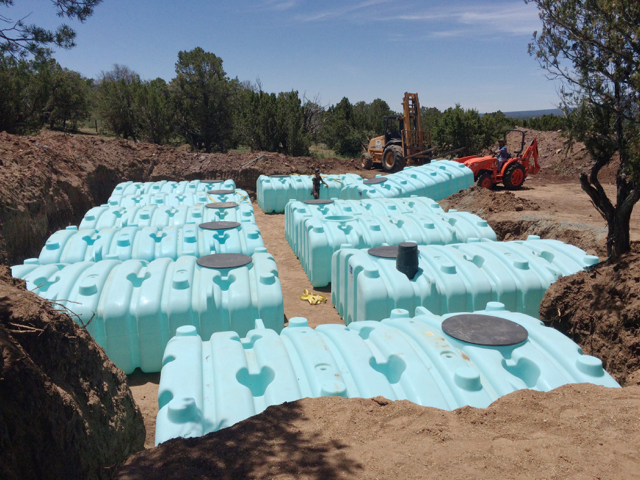Setting the Tanks
June 4, 2015
This was not as simple as it should've been. It took upwards of two weeks to sort out some vagueness with the manufacturer's specifications of backfilling the tanks with a 50/50 mixture of sand and pea gravel. The manufacturer, Den Hartog wasn't all that helpful when asked to clarify their specifications (other manufacturers only specify the use of pea gravel, not a mix of gravel and sand). Our tank dealer, Loomis Tanks, was helpful, yet slow in helping us figure out what we needed to safely bed these tanks. An engineering rep at Loomis reaffirmed that a mix of sand and pea gravel was not commercially available (and mixing our own in such huge quantities would be an ungainly task) and said that she would be comfortable with using only pea gravel. She also said that the bed depth would only need to be as deep as the ribs of the tank (manufacturer spec is 12" for our clay/rock soil type), which sort of implied that the tanks would be nestled in the bed instead of resting on top. After much back and forth we determined that it would be best for the tanks to rest directly on a compacted surface (we chose compacted crusher fines, 12" deep) and then backfilled with pea gravel to protect them from the swelling and shifting of the surrounding native clay.
The plan then was that we would be told when the tanks were shipped and arriving. Instead we were only given a ball park estimate ("there is a chance you'll see them by the end of next week."). To put an additional strain on the situation, we were told at the last minute ("Sorry I wasn't in the office yesterday..") that we are responsible for getting the tanks off the trucks. Subsequently, our contractor had to scramble at the last minute while he was in the thick of another portion of the project (preparing the bed) and figure out how to get some equipment, any equipment, out to unload the tanks that arrived surprise party style at our gate, with the trucker hot to leave to get to another pickup. This left us having to get suboptimal equipment (a backhoe instead of a forklift) and rigging a setup to unload the tanks. And since the last-minute backhoe was not able to transport the tanks and set them in the hole, its cost (and that of its operator) was almost completely extra - we still had to rent the forklift to get the tanks in to the hole.
Next time, we need to be more aggressive with our data gathering and communication. As soon as we pick out the tanks, we need to get all up in the tech specs and make sure we understand everything - right away while we still have time to sort it out. We were surprised with the amount of time it took to answer our questions about the specs; and we were surprised, twice, regarding the timeline and necessary equipment for the delivery of the tanks. Communication is a good thing.




| Description | Cost |
| 2500 gal cisterns w 28" risers (11) | $26368 |
| Freight | $4980 |
| Emergency Backhoe | $816 |
| Emergency Unloading | $830 |
| Forklift | $635 |
| Haul and Place Tanks | $600 |
| Total | $34229 |